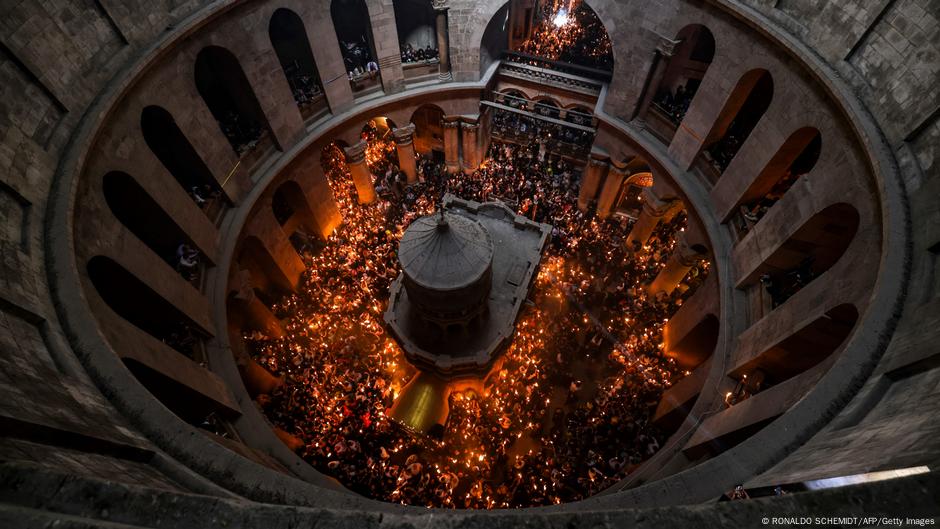Divine Flame: Jerusalem's Ancient Easter Miracle Ignites Faithful's Spirits

In a breathtaking display of faith and tradition, Orthodox Christians from across the globe gathered at the historic Church of the Holy Sepulcher in Jerusalem to participate in the ancient Holy Fire ceremony. This sacred ritual, steeped in centuries of religious significance, commemorates the profound Christian belief that this very site witnessed the crucifixion and burial of Jesus Christ.
The church, nestled in the heart of Jerusalem's Old City, became a beacon of spiritual unity as worshippers from diverse backgrounds converged to experience this powerful annual event. The Holy Fire ceremony, a deeply symbolic moment in Orthodox Christian tradition, represents the divine light and resurrection of Christ, drawing thousands of devoted believers to this hallowed ground.
Pilgrims watched in reverence as the timeless ritual unfolded, connecting them to a spiritual legacy that spans generations and transcends geographical boundaries. The atmosphere was charged with emotion, prayer, and an overwhelming sense of historical and religious significance.
